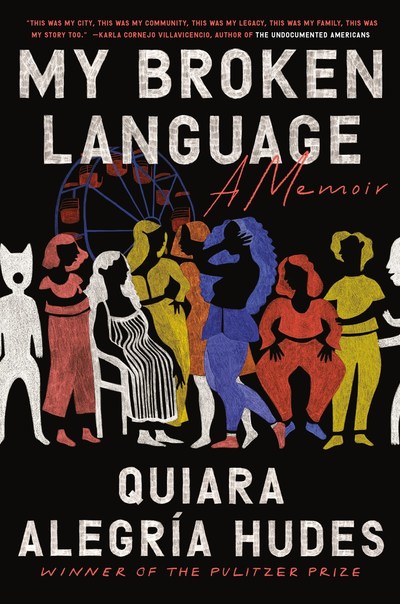Joyful, righteous, indignant, self-assured, exuberant: These are all words that could describe Quiara Alegría Hudes’ My Broken Language. The celebrated playwright calls her language broken, but in this extraordinary memoir she actually remakes language so that it speaks to her world—a world that takes as its point of origin a barrio in West Philadelphia where Hudes grew up surrounded by Perez women, whom she refers to as her own Mount Rushmore, her pantheon of goddesses. The women in her family laugh, cry, eat, dance and mourn, and they do it in a glorious blend of English and Spanish, in language made of flesh and motion. Hudes watches them from the stairs, eager to join in but uncertain exactly where she fits.
Like the best translators, Hudes occupies the in-between—in this case, in between the crowded and uproarious barrio, where life feels like an unfolding tragicomedy, and the staid suburbs, where her white father has settled into a routine life that offers plenty of picket fences but little space for complexity. Hudes’ narrative follows her life story, from living with both parents to traveling between them; from her growing bond with her extended Perez family to her trips back to her mother’s native country of Puerto Rico. Her delight in the musicians and artists of the Western canon leads her to Yale, where she realizes the infuriating limitations of that canon, and ultimately to Brown, where she dedicates herself to telling the story of her people, their bodies, their spirituality and their language. This is a book of bringing together dissonant stories, one that Hudes alone could write.
Hudes’ first name is an invented endearment, a form of the verb querer, which means “to love.” Her mother had seen the name spelled Kiara or Ciara or Chiarras, but for her daughter she wanted that same sound with a deeper meaning, one that indicated that her daughter was beloved (Quiara) as well as a source of happiness (Alegría). There may be no better compliment to the author of this marvelous, one-of-a-kind memoir than to say she truly lives up to her name. With My Broken Language, she has invented a language of love and to-the-bone happiness to tell stories only a Perez woman could share.


















